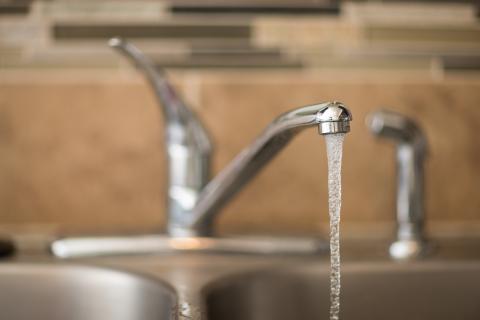Drinking Water: Lead
What is lead?
Lead is a naturally occurring element found in small amounts in the earth’s crust.
In the past, lead was added to gasoline, paint and varnishes, plastics, pipes, and some plumbing materials.
How can I be exposed to lead from drinking water?
Lead can enter drinking water from a variety of plumbing materials. The most common sources of lead in drinking water are lead service lines, lead-containing faucets, and lead solder joints (place where pipes met and were connected with lead-containing filler).
How can lead affect my health?
Studies have shown that there is no safe level of lead exposure. Lead can hurt anyone, but kids under age six are most vulnerable. Lead can affect brain development, school performance and behavior, and lifelong health.
How can I protect myself and my family from lead in drinking water?
Everyone should take these steps:
- Run the water for at least three minutes before drinking if it has been sitting for more than two hours. You can collect this water to use for other purposes like washing dishes or watering plants.
- Clean your faucet's screen once a month, if the water flow is low, when plumbing work has been done, and when there is nearby construction.
- Use cold water for drinking, making food, and making baby formula.
- Learn about your water quality.
- Public water users:
- Check your water system's consumer confidence report to learn about levels of lead in your community.
- Contact your water system to learn what they are doing to lower lead levels in the drinking water.
- Private well users:
- Test your private well for lead at least once every five years.
- Also test before the water will be used by someone who is pregnant or by babies and young children.
- Public water users:
- Check to your home’s plumbing for these potential lead sources:
- Faucets that are made of brass or bronze.
- Service lines or interior pipes are made of lead or galvanized steel.
- Homes built before 1986 likely have lead solder.
Did you test your water for lead?
If the lead concentration is at or greater than 10 micrograms per liter (µg/L):
- Use a different source of water for drinking and making foods that take up a lot of water (like rice, oatmeal, and gelatin).
- Also use a different source of water for making baby formula and for babies to drink.
Options for alternative water include bottled water and water from a certified filter or treatment system.
Find a certified filter or treatment device
If lead sources are found, take extra steps to protect sensitive groups.
- People who are pregnant and children with an elevated blood lead level should use a different source of water for drinking and making foods that take up a lot of water (like rice, oatmeal, and gelatin).
- Use a different source of water make baby formula and for babies to drink.
- Options for alternative water sources include bottled water or water from a certified filter or treatment system.
- Remove lead sources from the plumbing. Prioritize removing service lines and pipes made of lead and galvanized steel.
Our Lead in Drinking Water fact sheet, P-02602 has these steps in printable format.
Who regulates lead in water in Wisconsin?
The Wisconsin Department of Natural Resources (DNR) regulates how lead can be released into surface water and groundwater in Wisconsin.
The DNR also regulates how much lead can be in water served by public water systems and oversees the clean up of lead at contaminated sites.
Related topics
Our Lead-Safe Wisconsin page has information on how to protect yourself and your family from other sources of lead that may be in your home.
Our groundwater standards page has information on how Wisconsin's groundwater standards are set, DHS' role in the process, and a summary of the current and recommended standards including lead.
The Wisconsin Department of Natural Resources drinking water and lead page have more information on where lead can be found in plumbing and steps to reduce exposure.
The University of Wisconsin - Steven Point Well Water Quality Interactive Viewer shows water quality data from a variety of contaminants (including lead) at a county, township, and section levels.
The Agency for Toxic Substances and Disease Registry's ToxFAQs page has more information on lead exposure routes and health effects.
Questions? Can't find what you're looking for?
Contact us at dhsenvhealth@dhs.wisconsin.gov.

